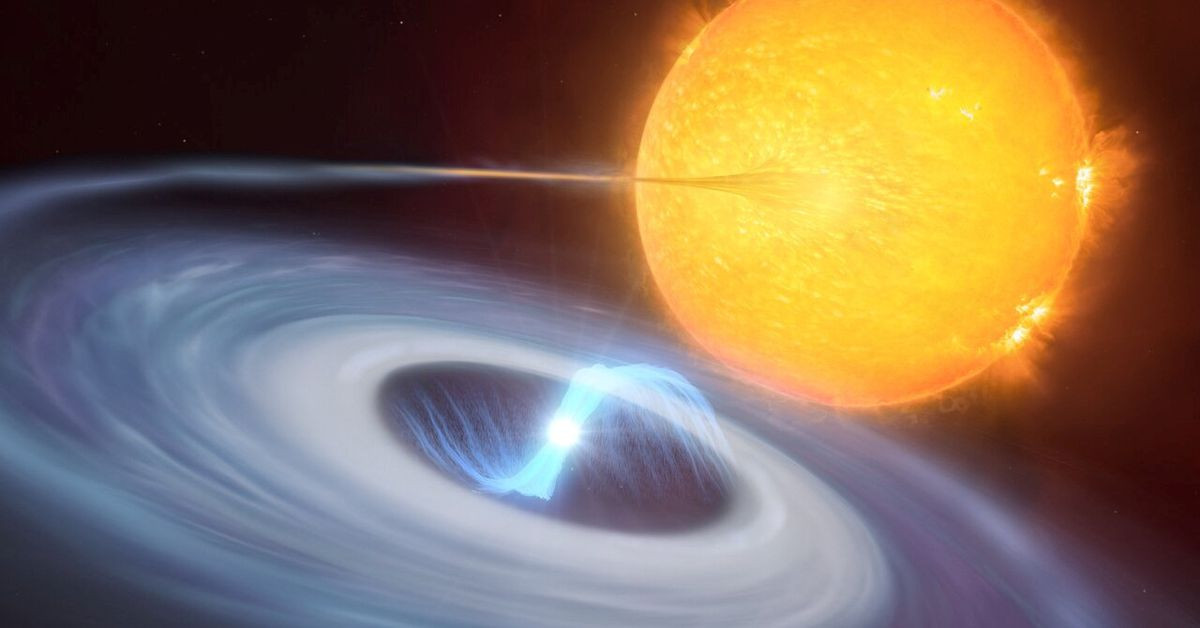Popular Reads
Top Results
Can't find what you're looking for?
View all search resultsPopular Reads
Top Results
Can't find what you're looking for?
View all search resultsSurprised astronomers find new type of star explosion, a micronova
Change text size
Gift Premium Articles
to Anyone
A
stronomers have detected a previously unknown type of stellar explosion called a micronova, which involves thermonuclear blasts at the polar regions of a white dwarf, a type of burned-out star, after it has siphoned material from a companion star.
The researchers said on Wednesday that a micronova was by far the least powerful type of stellar explosions now known, less energetic than a nova, in which a white dwarf's entire surface blows up, and tiny compared to a supernova, which occurs during the death throes of some giant stars.
Micronovae are observed from Earth as bursts of light lasting about 10 hours.
The documented occurrences involved three white dwarfs, one 1,680 light-years away from Earth, one 3,720 light-years away and one 4,900 light-years away. A light-year is the distance light travels in a year: 9.5 trillion kilometers.
"The discovery was an unexpected surprise. It goes to show just how dynamic the universe is. These events are fast and sporadic. Finding them requires looking at the right place at the right time," said astronomer Simone Scaringi of Durham University in England, lead author of the study published in the journal Nature.
White dwarfs, among the densest objects in the universe, result from the collapse of a dying star's core. They have the mass of the Sun but are about the size of Earth in diameter. Most stars, including the Sun, are destined to end their existence in this form.
Some white dwarfs are part of what is called a binary system, in orbit with another star.
Micronovae happen in very specific binary systems with a white dwarf star possessing a strong magnetic field and a low-mass normal star. The white dwarf's gravitational pull can strip hydrogen gas from the companion star's surface. The hydrogen then flows toward the white dwarf's magnetic poles, similar to how Earth's magnetic field channels the solar wind to our planet's magnetic poles to cause auroras.
At the base of the accumulating columns of gas at the white dwarf's poles, pressure and temperature rise to cause thermonuclear fusion that converts hydrogen into helium.
"Under the conditions in which this is triggered, this fusion is explosive and the micronova occurs: a thermonuclear 'bomb' goes off," said astronomer and coauthor Paul Groot, who divides his time between Radboud University in the Netherlands, the University of Cape Town and the South African Astronomical Observatory.
The explosion is localized and does not destroy the white dwarf. In fact, the micronova cycle can repeat itself.
"Only a very small percentage of the white dwarf participates in this explosion, roughly about one millionth of the surface area. Translated to the Earth, this would be an area of about, say, the city of London," Groot added.
Each micronova event burns through material equivalent to one large asteroid, or just over one millionth of Earth's mass, Scaringi said.
A micronova is similar to a nova, but with novae, the white dwarf lacks a strong magnetic field, meaning that hydrogen stolen from the companion star is distributed globally rather than concentrating at the poles. Novae can last for weeks or months, burning through about a million times more mass than micronovae, according to Scaringi.
The researchers discovered the micronovae when analyzing data from NASA's TESS space telescope. They used the European Southern Observatory's Very Large Telescope in Chile to confirm that the explosions involved white dwarfs.
Some other types of stellar explosions include a kilonova, when two neutron stars or a neutron star and a black hole merge; a hypernova, a kind of supernova involving a massive star exploding at end of its life cycle and collapsing to form a black hole; and a luminous red nova, which involves two stars merging.











